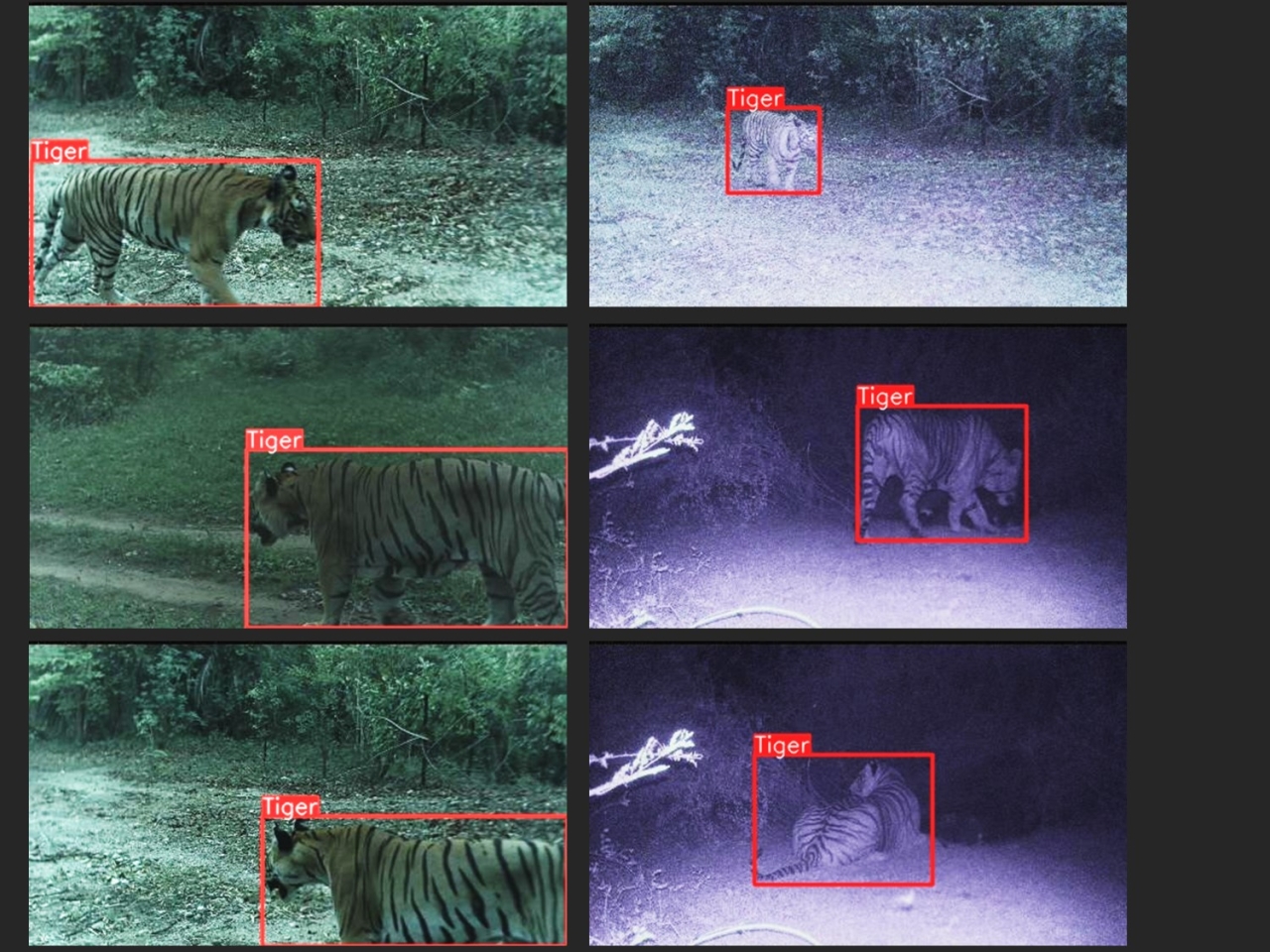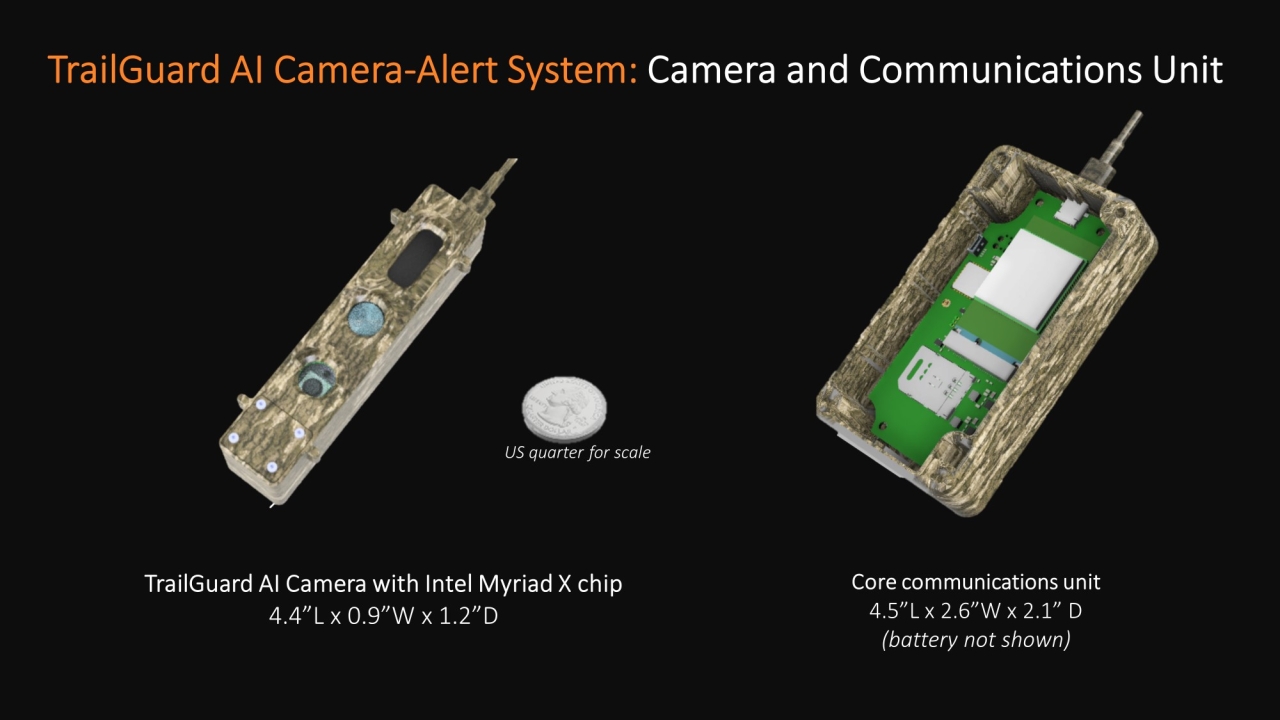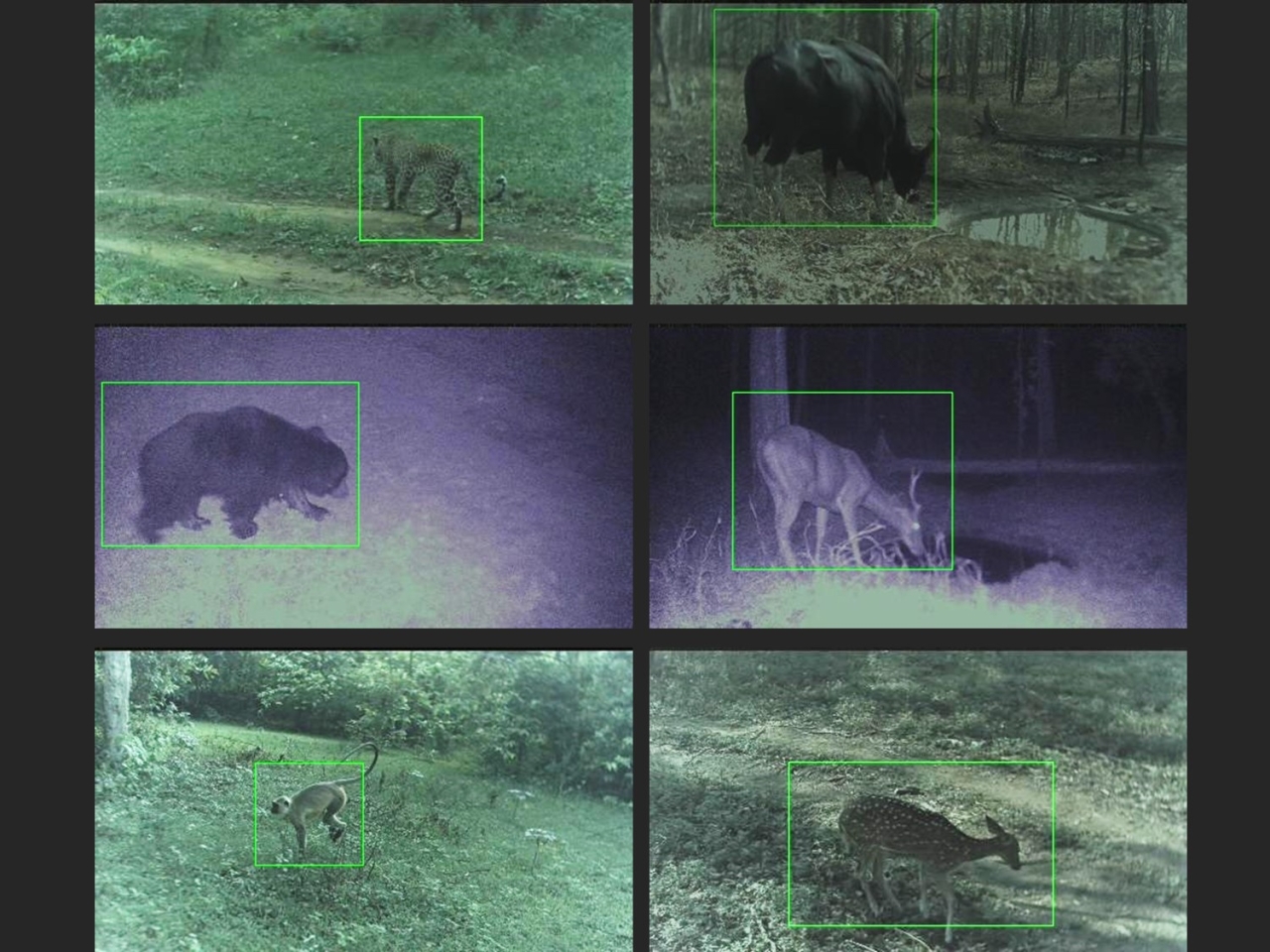Breakthrough monitoring technology to save the world’s tigers
- Nature Conservation
- Land Conservation
- Biodiversity
- Science & Technology
- Wildlife
- Mammals
- Indian Subcontinent
- Indomalaya Realm
For decades, tiger biologists have dreamt of a “smart” camera, a device that could detect a tiger on the prowl and send images instantly to a cell phone. Whether at dawn, dusk, or midnight, through monsoon rains or stifling heat, the remote unit would function 24/7, with long battery life, to protect and monitor this charismatic species.

Tigers detected at night and during the day by Trailguard AI. Image credit: NTCA, Madhya Pradesh Forest Department, Global Tiger Forum, and RESOLVE.
On International Tiger Day 2022, a major breakthrough in conservation technology was announced: for the first time ever, wild tigers and their prey have been detected by AI-powered, cryptic cameras that transmit the images to the cell phones and computers of park managers. Just as important, the elapsed time from the motion sensor triggered by the passing tiger, to running the AI, to transmission to the cell network, to the Internet, and to the end user is less than 30 seconds, making this technology a true real-time system. The camera-alert system can transmit more than 2,500 images on a single battery charge using cellular communication. In short, the dream has come true.
For the past three months, India’s National Tiger Conservation Authority, the Global Tiger Forum, and the Wildlife Wing of the State of Madhya Pradesh have partnered with Clemson University, and the NGO RESOLVE to bring the world’s most advanced, real-time wildlife monitoring system to the Kanha-Pench Tiger Conservation Landscape, in Madhya Pradesh.

Trailguard AI is the world’s first ai-powered camera-alert system to monitor endangered wildlife and detect illegal activity in protected areas and remote locations and transmit images in real-time. Image credit: RESOLVE
The new technology, prototyped effectively in Africa for the past four years and now available in Asia, is called TrailGuard AI. This tiny AI-embedded camera-alert system runs powerful computer models onboard the camera to weed out false positives before transmission of data, thus saving precious battery life, and sending only what the end user requires. Intel and the AI company CVEDIA both played critical roles in supplying the necessary computer chips and AI models to make this possible. First designed to detect poachers in African parks, the camera becomes a wildlife detector simply by updating the AI model to detect a range of endangered wildlife species. Where cell connectivity is excellent, as in much of India, TrailGuard AI takes advantage of the strong signal. Where there is no cell service, this system transmits images over long-range radio (LoRa).
The technology cannot come soon enough. In 2010, during the Year of the Tiger in the Chinese calendar, the Global Tiger Initiative spearheaded an effort to double the size of the wild tiger population—for shorthand, Tx2—after reports that the global population had dropped to an estimated 3,500. The situation has improved across much of the range, such that in 2022, also the Year of the Tiger in the Chinese calendar, the population has doubled in a number of range states.
Landscape-scale conservation is the most effective way to save area-sensitive, wide-ranging top predators like tigers. The deployment centered on Kanha-Pench, the most important of the 76 Tiger Conservation Landscapes in this predator’s range. The twin anchors of this landscape, Kanha National Park and Pench National Park, and their surrounding habitats, hold more than 500 tigers, the most anywhere. “I am glad to see the technology working so well. It holds great promise,” said Dr. H.S. Negi, former additional chief of wildlife in Madhya Pradesh and Senior Advisor, Global Tiger Forum.
The technology covers parks and can also monitor human or tiger use in corridors connecting reserves. “India ranks first among all range states, holding 70% of the world’s tigers, and has a great track record of good practices. Monitoring not just source areas, but outer linkages gain relevance for strengthening corridor linkages,” said Mohnish Kapoor, Head – Programme and Partnerships, Global Tiger Forum.

Other mammals detected and instantly transmitted by Trailguard AI include leopard, gaur, sloth bear, sambar, langur, and chital. Image credit: NTCA, Madhya Pradesh forest department, Global Tiger Forum, and RESOLVE
Research in Indian tiger reserves also shows that tiger population recovery depends heavily on prey populations, so being able to monitor deer, Indian bison, and wild boar is vital information to predict recovery. “Saving tigers requires effective monitoring of the wild population and the prey base. TrailGuard AI gives managers that tool. TrailGuard AI detects a wide range of species important to Asian wildlife managers, especially when dealing with human-tiger interface areas. The GTF is committed to fostering new technology for furthering the cause," Dr. Rajesh Gopal, Secretary General, Global Tiger Forum, said.
The field deployment in Kanha-Pench enjoys the enthusiastic support of Tigers United, a consortium of US-based universities and their students—Clemson, Auburn, Louisiana State, and the University of Missouri—who cherish tigers as their mascot. Dr. Brett Wright, Professor and Dean Emeritus of the College of Behavioral, Social and Health Sciences at Clemson University and head of Tigers United, said, “Saving tigers is the responsibility of the whole world. That’s why we have supported this project and want to help scale the technology to save tigers everywhere.”
“The GTIC is closely collaborating with Tiger Range Countries and like-minded partners in upgrading field monitoring with innovative technology. TrailGuard AI is most welcome at this juncture for a species like the endangered wild tiger, which crosses many land uses and requires a landscape level approach involving several stakeholders." — Keshav Varma, CEO and Executive Director of the Global Tiger Initiative Council
Learn more about Trailguard AI%20is%20a%20subspecies%20of%20tiger%20found%20on%20the%20Indonesian%20island%20of%20Sumatra%20dreamstime_xxl_14836831%20(1).jpeg?auto=compress%2Cformat&w=1440)

